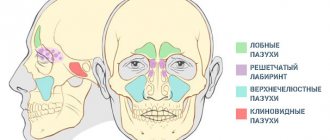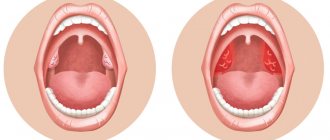“Three-day fever”, “summer flu”, “Boston fever”, “Turkish chickenpox” are just a few names for the Coxsackie virus. This heat-loving infection, contrary to popular belief, can ruin summer holidays not only on the Turkish coast. Infection with this disease is recorded annually, in addition to Turkey, in Greece, Spain, Bulgaria and even on the Black Sea coast of Russia. Is there any way to protect yourself from this infection? Who is at risk, who does the virus “choose” first? And how to treat if you are already infected?
- Symptoms of the coxsackie virus in children
- What products are recommended for patients?
- Is it possible to use Viferon for coxsackie?
- What antiviral drugs can be taken for prevention?
Every year, starting from 2021, Rospotrebnadzor issues leaflets for tourists planning to spend a summer holiday at sea in warm countries, which talk about the dangers of the virus, as well as some resort places where the likelihood of infection is especially high.
People traditionally go to the sea with whole families with small children to relax and improve their health, and instead of the gentle sea and beach they risk spending time isolated in a hospital bed. So what do you need to know about the virus to avoid getting sick, and if you do get sick, how to treat it to avoid dangerous complications?
General information
Coxsackie virus and ECHO virus belong to the group of enteroviruses and are the main causative agents of enterovirus infection (EVI).
In recent years, there has been a tendency towards activation of Coxsackie viruses and an increase in infectious diseases caused by enteroviruses. The incidence rates of EVI in the CIS countries vary between 11.5-16.2/100 thousand population. The majority of cases are children (90%). The specificity of EVI is the polymorphism of clinical manifestations, which is due to their ability to affect various tissues/organs (kidneys, heart, central nervous system, lungs, liver and others), long-term virus carriage, the presence and wide distribution of asymptomatic forms, the absence of a clear pronounced dependence of nosological forms on the serological type of the pathogen , as well as the lack of specific methods of prevention, which makes enterovirus infections practically uncontrollable.
Diseases more often occur in the form of sporadic morbidity, but every 3-4 years epidemic outbreaks caused by different serotypes of Coxsackie viruses are recorded around the world. Every year, the proportion of certain infecting serotypes of the virus changes significantly, which many authors explain by the accumulation of a “critical mass” of susceptible children, which is necessary to maintain the epidemic process. It is also important that one serotype of the Coxsackie virus in adults and children can cause clinically completely different diseases (even at the same time in the same family), while at the same time different serotypes of the virus can cause diseases whose symptoms are very similar, which complicates the diagnosis and treatment of patients .
Enterovirus infection Coxsackie in the everyday lexicon is called “Turkish flu” due to partial similarity with the symptoms of classic flu and the introduction of the Coxsackie virus into the CIS countries by people vacationing at resorts in Turkey.
CANCELLATION OF TOUR TO TURKEY. WHAT COMPENSATION CAN YOU EXPECT?
Officials did not impose any restrictions on the sale and formation of tours to Turkey . Thus, if a tour is canceled before its start date, the tour operator has the legal right to retain the costs incurred in organizing the tour.
The final amount of expenses actually incurred by him depends on the date of termination of the contract and many other factors. The exact figure is not specified in the law and depends only on the terms of the contract for the sale of tourism products, but the closer to the date of travel, the greater the fine will be .
Pathogenesis
For Coxsackievirus A and B, the entry gates are the mucous membranes of the oral cavity, upper respiratory tract and intestines. Enteroviruses freely overcome the “gastric barrier” and penetrate the cells of the small intestinal mucosa. Subsequently, the process of virus replication occurs in the cells of the intestinal epithelium, lymphoid tissue and mesenteric lymph nodes. The virus then enters the bloodstream and causes primary viremia. The Coxsackie virus exhibits the greatest tropism for cells of the central nervous system/muscle tissue, but a variety of organs are also involved in the pathological process.
Dissemination of the pathogen occurs in the heart, liver, lungs, kidneys, eye vessels, pancreas, where it multiplies and accumulates. Clinical symptoms, severity and outcome of the disease are determined by a number of factors - the biological properties of the virus serotypes, their tropism, the state of the humoral/cellular immunity of the human body. Swelling, inflammation and areas of necrosis develop in the affected organs.
The stages of pathogenesis are shown schematically in the figure:
Stages of pathogenesis of the Coxsackie virus
Persons who have recovered from the disease develop long-lasting (over several years) type-specific immunity.
WHAT ELSE SHOULD YOU PAY ATTENTION WHEN APPLYING FOR INSURANCE FOR THOSE GOING ABROAD?
An insurance policy is cheaper if it provides for a so-called deductible . Usually this is an amount of about 50-100 euros, which the tourist will have to pay for treatment out of his own pocket. Costs only above the specified amount are compensated by the insurance company. It has been calculated that the average cost of medical care provided in connection with the virus depends on the country of treatment and the severity of the disease and can vary from 60 euros in Bulgaria, 80 euros in Turkey and up to 1500 USD in the United States.
If the policy is included in a travel package, you should check in advance whether it includes a deductible. If it does, and there are concerns about a possible Coxsackie illness while on vacation, then it makes sense for a tourist (especially with children) to consider purchasing an additional insurance policy - without a deductible .
come back
Classification
There is no unified classification of enteroviruses due to the wide polymorphism of clinical symptoms. In the Russian Federation, a classification according to the type of disease has been adopted.
- Typical forms of enterovirus infection: herpangina , enteroviral fever , acute respiratory diseases, exanthema , epidemic myalgia , aseptic serous meningitis , encephalomyocarditis , hepatitis , myocarditis , mesadenitis , meningoencephalitis , gastroenteric form, hemorrhagic conjunctivitis , vesicular ny stomatitis .
- Atypical forms of enterovirus infection: erased, inapparent.
According to the current: light, medium and heavy.
IF SUDDENLY THE SITUATION IS RECOGNIZED UNSAFE, THEN IT WILL BE POSSIBLE TO REFUND THE ENTIRE TOUR AMOUNT?
The head of the legal service of ATOR, Nadezhda Efremova, explains that Rostourism’s statements in case of danger to tourists in a particular country can be divided into two types.
The first is a recommendation to be careful while on vacation. Such wording does not introduce any prohibitions or restrictions on travel to the country . In this case, if a tourist wants to cancel the tour “because he is afraid,” the refund is made in accordance with the terms of the contract for the sale of tourism products - on the terms signed by the parties.
The second option may include restrictions on the formation and implementation of tours to a particular country. In this regard, changes to flight programs may also be made. In this case, the refund of funds for unfulfilled obligations to the tourist is made in full - but there are currently no such notifications in Turkey.
Causes
Coxsackie viruses of group A (serotypes 1-22, 24) and group B (serotypes 1-6) are the etiological factor of a number of enteroviral infections.
Morphology and biological properties
Coxsackie enterovirus is a small RNA virion (28 nm) with cube-shaped symmetry and the ability to form crystals inside affected cells. Virion capsid without envelope. The appearance of the Coxsackie virus is shown in the figure below.
Coxsackievirus B4
Based on their antigenic structure, Coxsackie viruses are divided into two large groups: A-26 and B-6 serological types. The virus is highly resistant in environments and on environmental objects. But they are quickly inactivated at temperatures exceeding 50 ° C, they can persist for 2 months at a temperature of 37 ° C, survive for a long time in river/tap water, but especially for a long time in waste water.
Stable in acidic environments (pH 3-5). The activity of enteroviruses remains for several years even when frozen, and when stored in a refrigerator at a temperature of +4-6°C - for several weeks. At the same time, repeated freezing and subsequent thawing does not lead to a decrease in their activity. They quickly die when dried, under ultraviolet irradiation and when exposed to formaldehyde , even in small concentrations. They are destroyed by boiling (at 100 °C - instantly, 60 °C in 6-8 minutes).
Epidemiology
Coxsackie viruses are ubiquitous: their reservoir in nature is water, soil, and food. In the human population, the human body. The main epidemiological feature is the widespread ability to form healthy virus carriers in the human body with a long period of virus release into the external environment (up to 3-6 weeks). Virus carriage in healthy individuals varies between 17-40%. Among children, the percentage of virus excretors reaches 20%, and at the age of under 1 year it is even higher - 32.6%. This feature contributes to the survival of the virus even in conditions of high levels of immunity in the population.
The level of natural immunity increases with age, reaching 90% already at the age of 5-10 years. Among the adult population, antibodies to the most common Coxsackie serotypes are found in 30-80% of the population. At the same time, the seropositivity of the human population is much higher in regions/countries/cities with a low social and hygienic standard of living. Some authors even consider these data as an indicator of the standard of living of the population and even the effectiveness of anti-epidemic protection.
The source of infection is a sick person, a recovering person or a virus carrier. Infection with Coxsackie viruses occurs throughout the year, but in the northern hemisphere the peak incidence of EVI occurs in the summer-autumn season. In warm regions and the tropics, the incidence does not have a pronounced seasonality. EVI affects people of all age groups, but incidence rates are inversely proportional to age. About 75% of EVI cases occur in children under 15 years of age, and children under 1 year of age get sick several times more often than older children and adults. Males get sick more often.
The leading mechanism of transmission is fecal-oral. Its implementation is carried out by water, food and household contact. Airborne and transplacental (from mother to fetus) routes are possible. The main condition for the implementation of the infection transmission mechanism is poor sanitary living conditions. The infection rate of children living in unfavorable sanitary conditions can reach 50%.
The most important way for Coxsackie viruses to spread is through contact with another person's contaminated hands and objects, followed by inoculation of the virus through the nose, mouth or eyes, and through contaminated food and water. Those infected are most contagious during the first week of illness.
Symptoms of the Coxsackie virus
The incubation period of the Coxsackie virus varies for different nosological forms and can range from 2 to 35 days. The average incubation period is 7-10 days. The clinical symptoms of the Coxsackie virus in adults, as well as the symptoms of the Coxsackie virus in children, are extremely varied.
Coxsackie virus in children. Hand-foot-mouth syndrome
Among the main clinical syndromes caused by the Coxsackie virus of various serotypes are:
- Coxsackie A viruses: herpangina , serous meningitis , acute pharyngitis , paralysis, exanthema , pneumonia of newborns , exanthema of the mouth and extremities, contagious rhinitis, hepatitis , diarrhea of newborns/young children, acute hemorrhagic conjunctivitis .
- Coxsackie B viruses: serous meningitis , pleurodynia , severe systemic infection of newborns, pneumonia and upper respiratory tract disease, myocarditis and meningoencephalitis , fever , hepatitis , rash.
Let us briefly consider the clinical manifestations of the most common nosological forms of enteroviral infections in adults caused by the Coxsackie virus.
- Enterovirus fever : the most common form of enterovirus infection in recent years. It is characterized by an acute onset with short-term fever for up to 2-4 days, less often up to 1-1.5 weeks. It occurs with mild general infectious symptoms - moderate headache, minor catarrhal symptoms, muscle pain, and less often occurs with an enlarged liver and spleen. Often not diagnosed or diagnosed in the presence of a local epidemic outbreak in a community.
- Epidemic exanthema : an increase in body temperature, during a decline/at a height of temperature, the appearance of a small maculopapular, less often hemorrhagic rash, which is localized mainly on the torso, face and arms. The rash persists for several hours or 1-2 days, after which it disappears without a trace. On the oral mucosa there is enanthema . A more common variant of enteroviral exanthema in children is damage to the skin of the hands and feet, as well as the mucous membrane of the oral cavity - the so-called “hand-foot-mouth syndrome” (see photo below), caused by serovars 5,10,16 of the Coxsackie A virus. Against the background moderate general intoxication on the skin of the hands, feet, cheeks and mucous membrane of the tongue, rashes appear in the form of vesicles with a diameter of 1-3 mm with hyperemia around them.
- Herpetic sore throat : sore throat, increased body temperature. On the palatine arches and mucous membrane of the soft palate there are papules, which quickly transform into vesicles and after 1-2 days ulcerate and become covered with a white coating. Hyperthermia persists for 2-3 days and gradually decreases. Changes in the pharynx persist for 6-7 days. With the addition of bacterial flora, general infectious symptoms increase. Often combined with other forms of EVI.
- Gastroenteric form: begins with an increase in body temperature to a subfebrile level, weakness, loss of appetite, hyperemia of the pharynx mucosa, and after 1-2 days watery diarrhea, abdominal pain, bloating, flatulence appears, an admixture of mucus appears in the stool, stool frequency up to 10 times , sometimes vomiting. The duration of the disease is 1-2 weeks.
- Serous meningitis : headache, fever up to 39-40 °C, anxiety, vomiting, and sometimes convulsions. At the height of the fever, meningeal signs appear - stiff neck and specific symptoms. Abdominal pain, abdominal reflexes are reduced. During a spinal puncture, there is an increase in cerebrospinal fluid pressure. Sometimes undulating fever. After meningitis, asthenic syndrome persists for a long time, and in some cases intracranial hypertension may develop.
- Enteroviral encephalitis : headache, high body temperature, drowsiness /excitement, impaired consciousness, convulsions, vomiting. Subsequently, symptoms develop depending on the area of brain damage (hemispheric, brain stem, cerebellar). Sometimes the pathological process in the brain is combined with damage to the spinal cord, which is manifested by flaccid paresis/paralysis of the muscles of the limbs and torso, and autonomic disorders. With the development of meningoencephalitis, meningeal symptoms appear. The course of the disease is severe, with a high probability of death.
- Epidemic myalgia : pain in the muscles of the chest, diaphragm and abdomen. Often the pain is localized in the epigastric/iliac region or migrates, sometimes combined with pain in the extremities, fever to febrile levels, difficulty breathing, especially inhalation, headache. Muscle pain is paroxysmal, lasting 10-30 minutes. The duration of symptoms is 3-10 days.
- Mesadenitis : symptoms of general intoxication, abdominal muscle tension, frequent vomiting, pain and bloating.
- Paralytic form: weakness in the legs/arms, muscle tone and tendon reflexes are reduced on the affected side, increased body temperature, gait disturbance. Paresis and paralysis quickly disappear, atrophy does not develop.
- Mesadenitis : inflammation of the mesenteric lymph nodes. Increased body temperature, abdominal pain, vomiting, bloating, abdominal muscle tension.
- Enteroviral myocarditis : weakness, fatigue, discomfort/pain in the heart area, the boundaries of the heart are expanded, tachycardia , muffled heart sounds, ECG shows focal/diffuse changes in the myocardium.
- Enteroviral hemorrhagic conjunctivitis: redness, lacrimation, pain in the eyeballs, swelling of the eyelids, photophobia , hemorrhage in the conjunctiva of the eyes/sclera. Increased body temperature, over time, many patients develop epithelial small focal keratitis or uveitis. In severe cases - iris dystrophy, uveal cataract, corneal opacification, atrophy of the eyeball.
- Enteroviral hepatitis: clinical symptoms resemble the anicteric form of viral hepatitis A. Abdominal pain, increased body temperature, myalgia, enlarged liver. Deviations in liver function tests are insignificant.
Modern studies convincingly prove the role of EVI in the occurrence of isolated encephalitis, glomerulonephritis and hemorrhagic cystitis.
Tests and diagnostics
The diagnosis of a specific nosological form of EVI is made on the basis of complaints, clinical manifestations, data from laboratory and instrumental examinations.
Laboratory tests include: CBC, OAM, analysis for Coxsackie virus (nasopharyngeal swab, vesicle contents, cerebrospinal fluid for enteroviruses using PCR), blood for CSC/PHA.
Additional diagnostic examinations: ECG, biochemical blood test (bilirubin, creatinine, AlAt, AsAt, urea), blood coagulogram, comprehensive ultrasound, MRI.
Coxsackievirus in children
Despite the commonality of the manifestations of the Coxsackie virus in the body of adults and children, there are a number of features. First of all, in most children, Coxsackie infection is asymptomatic. According to Dr. Komarovsky, the most common symptoms of the Coxsackie virus in children are herpangina and hand-foot-mouth syndrome, which affect almost all children. In his opinion, no special treatment is required for such children; symptomatic therapy and plenty of fluid intake are sufficient. Diseases disappear quickly.
Sometimes parents are interested in whether the child is contagious and how contagious he is. A child is a source of the EVI pathogen with the possibility of transmitting it to others throughout the disease, and in many cases even after the disease for 1-2 weeks. Therefore, a sick child should be isolated as soon as possible.
Newborns and young children are a special risk group. In most cases, EVI manifests itself in the form of a relatively benign fever, in some with a rash on the body. At the same time, Coxsackie viruses are the most common cause of encephalomyocarditis . A child becomes infected mainly from relatives in the family, sometimes intrauterinely. Characterized by lethargy, vomiting, increased body temperature, symptoms of heart damage: shortness of breath , acrocyanosis , tachycardia , cardiac arrhythmia, expansion of the boundaries of the heart. With encephalitis - focal symptoms. The course is severe and death is possible.
Another extremely serious disease is sepsis-like disease, the etiological agent of which is Coxsackie viruses. Very often, the infectious disease is extremely severe, lightning fast with liver necrosis and damage to the heart, lungs, pancreas and brain and ends in death. The severity of the disease is determined by the level of maternal antibodies, the state of health of the child and the virulence of the infectious agent.
How to distinguish a rash from chickenpox:
If you have any concerns about your baby's condition, you should contact a qualified professional immediately. Doctors from the Moscow Medical Center, located in the Central Administrative District of the Presnensky District at the Barrikadnaya metro station, will help diagnose and make the correct diagnosis in any situation.
The text was prepared by Anna Alekseevna Geraskina, Candidate of Medical Sciences, pediatrician at the Children’s Health clinic.
Diet
Diet for influenza, ARVI, colds
- Efficacy: therapeutic effect after 4-7 days
- Terms: 5-12 days
- Cost of products: 1500-1600 rubles per week
A balanced dairy-vegetable diet with plenty of fluids. When treating enteroviral exanthems , foods that irritate the oral mucosa (fried foods, spices, pickles, citrus fruits, hot foods/drinks) are excluded from the diet.
Prevention of Coxsackie virus
There is still no specific prevention, which is due to the large number of serotypes of the virus. Nonspecific prevention includes:
- compliance with personal hygiene rules (thorough hand washing with disinfectant solution after visiting the toilet/before eating);
- Thorough washing of fruits and vegetables before consumption and rinsing with boiling water;
- using bottled water for drinking;
- swim only in permitted places; do not swallow water while swimming;
- avoiding contact with persons with clinical manifestations of EVI.
When a focus of EVI is identified, in order to localize it, the following is carried out:
- Active identification of patients with EVI and persons in contact with patients and establishment of monitoring of them.
- Isolation and hospitalization of patients (if necessary).
- Disinfection measures - disinfection (final and current).
- Strengthening sanitary supervision over catering, the water supply system, maintenance of the territory, compliance with the regime of organized children's groups and health care facilities.
- In case of an unfavorable epidemiological situation, it is recommended to administer 0.3 ml/kg of gamma globulin to all persons in the foci of infection.
HOW TO GET YOUR MONEY BACK FOR AN EARLY RETURN HOME.
This question may be asked by tourists who are afraid that upon arrival at the hotel they will find vacationers with suspicious rashes. If the situation is not recognized as an epidemic , the tourist can contact the operator with a request for compensation for lost services.
However, because the refusal of services occurred at the time of their provision, then the tour operator’s partners will not be able to sell them to other tourists. The same applies to the return air ticket. Therefore, refunds for unused services are unlikely .
Consequences and complications
EVI, which occurs in mild forms, ends in the vast majority of cases with complete recovery. However, with meningitis , encephalomyocarditis and meningoencephalitis in newborns, complications such as cerebral edema, hemi/monoparesis, epileptoid seizures, and decreased muscle tone are common. Severe EVI can contribute to acute respiratory failure and the development of pneumonia, and in case of eye damage - cataracts .
Medications
To eliminate the main symptoms of pathological conditions resulting from the development of this virus, different drug treatment regimens may be recommended. In the absence of complications, therapy can be carried out at home. Since there are no etiotropic drugs, drugs that alleviate the symptoms of the disease are used. Typically, treatment regimens in these cases consist of:
- antipyretic drugs;
- anti-inflammatory drugs;
- analgesics;
- immunomodulating drugs;
- sorbents and antihistamines.
Antiseptics are used for local treatment of ulcerations on mucous and skin surfaces. In addition, it is necessary to maintain bed rest and drink more fluids. If the patient's condition worsens and any complications develop against the background of an enteroviral disease, an urgent need to consult a doctor.
List of sources
- Bondarenko, V. I. Enteroviruses in river water Text. / V. I. Bondarenko, V. I. Zadorozhnaya, K. V. Yashchenko // Hygienic aspects of biological pollution* of the environment: materials of the X All-Union Conference. -M., 1988. Part: 2. - P. 79.
- Kozhevnikova, N.V. Increasing role of enteroviruses in modern infectious pathology Text. / N.V. Kozhevnikova, T.N. Karavyanskaya, E.B. Golubeva // Far Eastern Journal of Infectious Pathology. 2007. -No. 10. - P. 52-53. — Bibliographer: p. 53.
- Kokoreva S.P. Modern complex therapy of viral neuroinfections in children / S.P. Kokoreva, N.P. Kuprina, O.A. Panina // Children's infections, 2007. – T. 6, No. 4. – P. 47-53.
- Resolution of the Chief State Sanitary Doctor of the Russian Federation dated July 27, 2011 N 106 SP 3.1.2950-11 “Prevention of enterovirus infection.”
- Sabitova A.M., Alexandrova T.A. Modern clinical and epidemiological features of enterovirus various clinical forms of infection // Collection of materials of the X Russian conference “Pediatrics and pediatric surgery in the Volga Federal District”, Kazan, November 26-28, 2013. - P. 60.











